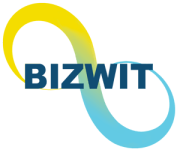Global Logic Semiconductor Market is valued at approximately USD xx billion in 2022 and is anticipated to grow with a healthy growth rate of more than xx% over the forecast period 2023-2030. Logic semiconductors are electronic devices that are designed to perform logical operations. They are a fundamental building block of digital electronic circuits and are used in a wide range of applications, including computers, smartphones, consumer electronics, and industrial automation. The Logic Semiconductor market is expanding because of factors such as an increase in the number of connected devices and growing demand for consumer electronics devices. Logic semiconductors are primarily used to process and manipulate digital signals, which consist of binary data represented by ones and zeros. These semiconductors use logic gates, which are electronic circuits that perform basic logical functions such as AND, OR, NOT, and XOR operations, to process and manipulate these signals. Its importance has progressively increased during the forecast period 2023-2030.
Logic semiconductors provide the communication capabilities for IoT devices to interact with each other and with the internet. They integrate communication protocols like Wi-Fi, Bluetooth, Zigbee, cellular connectivity or other proprietary communication protocols. According to Statista, The global number of Internet of Things (IoT) devices is expected to nearly triple from 9.7 billion in 2020 to more than 29 billion in 2030. In 2030, the highest number of IoT devices to be found in China with around 5 billion consumer devices. Furthermore, the consumer sector is anticipated to dominate in terms of the number of Internet of Things (IoT) connected devices in 2030, with 17 billion connected devices worldwide. Another important factor that drives the market is the demand for consumer electronics devices. As per Statista, the global revenue in the consumer electronics market is expected to rise by USD 125.5 billion between 2023 and 2028. The revenue is estimated to amount to USD 1.2 trillion by 2028. In addition, Consumer electronics retail sales in the United States are expected to reach 485 billion US dollars in 2023. OLED TVs are expected to earn USD2.3 billion in revenue and Portable gaming consoles were predicted to earn USD 1.5 billion in revenue during the same year. Also, rising technological advancements in logic semiconductors and rising demand for various industrial devices and equipment would create a lucrative growth prospectus for the market over the forecast period. However, the high cost of Logic Semiconductor and technical complexity stifles market growth throughout the forecast period of 2023-2030.
The key regions considered for the Global Logic Semiconductor Market study includes Asia Pacific, North America, Europe, Latin America, and Middle East & Africa. North America dominated the market in 2022 owing to the rising demand for consumer electronics. According to Statista, Consumer electronics retail sales in the United States are expected to reach 485 billion US dollars in 2023. OLED TVs are expected to earn USD 2.3 billion in revenue and Portable gaming consoles were predicted to earn USD1.5 billion in revenue during the same year. Asia Pacific is expected to grow significantly during the forecast period, owing to factors such as modernizing telecommunication and broadband infrastructure in the market space.
Major market player included in this report are:
Xilinx, Inc
Fujitsu Semiconductor Ltd
Teledyne Defense Electronics, LLC
Himax Technologies, Inc
Novatek Microelectronics Corporation
NXP Semiconductors
Intel Corporation
Lattice Semiconductor Corporation
Fuji Electric Co. Ltd
Samsung Electronics Co., Ltd
Recent Developments in the Market:
Ø In March 2023, Samsung Electronics plans to invest USD 230 billion over the next 20 years in an ambitious South Korean national initiative to establish the world’s largest semiconductor production base near Seoul. The chip-making “mega cluster,” which should be developed in Gyeonggi Province by 2042, anchored by five new Samsung semiconductor plants. According to South Korea’s Ministry of Trade, Industry, and Energy, it hopes to lure 150 other companies that make materials and components or design high-tech chips.
Global Logic Semiconductor Market Report Scope:
ü Historical Data – 2020 – 2021
ü Base Year for Estimation – 2022
ü Forecast period – 2023-2030
ü Report Coverage – Revenue forecast, Company Ranking, Competitive Landscape, Growth factors, and Trends
ü Segments Covered – Type, End-User, Region
ü Regional Scope – North America; Europe; Asia Pacific; Latin America; Middle East & Africa
ü Customization Scope – Free report customization (equivalent up to 8 analyst’s working hours) with purchase. Addition or alteration to country, regional & segment scope*
The objective of the study is to define market sizes of different segments & countries in recent years and to forecast the values to the coming years. The report is designed to incorporate both qualitative and quantitative aspects of the industry within countries involved in the study.
The report also caters detailed information about the crucial aspects such as driving factors & challenges which will define the future growth of the market. Additionally, it also incorporates potential opportunities in micro markets for stakeholders to invest along with the detailed analysis of competitive landscape and product offerings of key players. The detailed segments and sub-segment of the market are explained below:
By Type
Special Purpose Logic
Display Drivers
General Purpose Logic
Application Specific Integrated Circuit
Programmable Logic Devices
By End-User
Communication
Consumer Electronics
Automotive
Manufacturing
Others
By Region:
North America
U.S.
Canada
Europe
UK
Germany
France
Spain
Italy
ROE
Asia Pacific
China
India
Japan
Australia
South Korea
RoAPAC
Latin America
Brazil
Mexico
Middle East & Africa
Saudi Arabia
South Africa
Rest of Middle East & Africa



